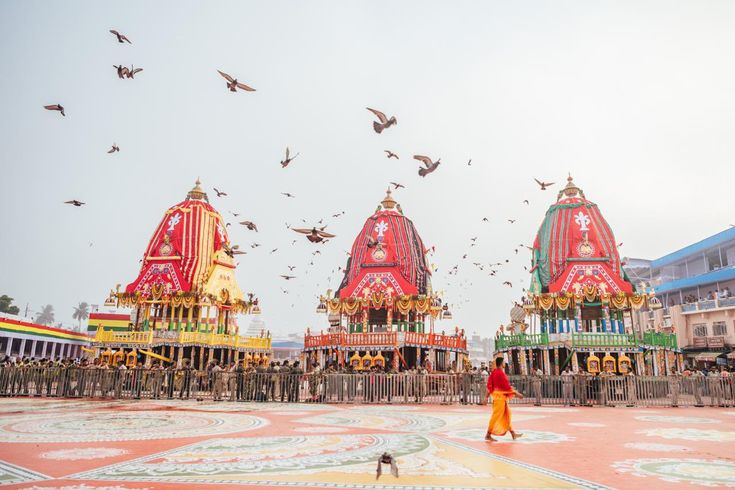Rath Yatra, the Chariot Festival, is one of the most deeply loved and visually grand Hindu festivals. Every year in Puri, Odisha, Lord Jagannath steps out of his temple, accompanied by his brother Balabhadra and sister Subhadra, to visit the Gundicha Temple. This short but powerful two-kilometer journey draws millions.
In 2025, Rath Yatra begins on June 27 (Friday) and concludes on July 5 (Saturday), with several significant rituals woven into these days.
The Historical and Mythological Roots
Rath Yatra finds its origin in the Jagannath cult of Odisha, a tradition dating back over 800 years. The word Jagannath means “Lord of the Universe.” But unlike many other deities, Lord Jagannath is unique in appearance and representation. He is the only god in Hinduism whose idols are replaced every 12 to 19 years in a ritual called Navakalevara.
Mythologically, the Rath Yatra commemorates Krishna’s journey from Dwaraka to Vrindavan, symbolizing a reunion with his childhood companions and a return to innocence and divine love.
In the Puri version, Lord Jagannath, along with his siblings Balabhadra and Subhadra, travels to Gundicha Temple, his aunt’s abode, in a grand public procession.
What Makes Rath Yatra Special?
Rath Yatra is not just a festival. It’s a symbol of connection. During the Yatra, everyone, regardless of caste, background, or belief, can see the deities. No temple gates, no restrictions.
Even the King of Puri becomes a humble servant, sweeping the chariots with a golden broom. That act signifies that before God, all are equal.
Pulling the chariot, or even watching it, is believed to
- Bring blessings
- Wash away past sins (karmic cleansing)
- Grant inner strength and peace
- Remove planetary obstacles (Graha doshas)
- Bring harmony to personal and professional life
For many, it’s a once-in-a-lifetime experience, a moment of cosmic reset.
Scientific and Psychological Benefits
Rath Yatra also impacts mental and physical well-being:
- Pulling the chariots improves cardiovascular health, boosts dopamine, and fosters group cohesion.
- Chanting mantras and singing bhajans together trigger the release of oxytocin. It reduces anxiety, elevates mood, and can relieve symptoms of stress-related disorders.
- Frequencies created during rituals are said to influence brain waves, inducing a state of calm or spiritual alertness.
- Following rituals at sunrise, fasting, and walking in sunlight naturally enhances melatonin regulation, sleep quality, and even hormonal balance.
A Living Tradition
The chariots themselves are gigantic, built fresh each year, carved from sacred wood, and decorated with bright cloth. With music, chants, and dancing, the festival is a wave of devotion on the streets.
Key Dates for Rath Yatra 2025
- Main Yatra Day: June 27 (Friday)
- Return (Bahuda Yatra): July 5 (Saturday)
But the festival is more than a single day. It begins weeks earlier with rituals that reflect care, love, and tradition.
Ritual Timeline
- Akshaya Tritiya (Apr 30): Beginning of chariot construction.
- Snana Purnima (Jun 11): Holy bath of the deities with 108 pitchers.
- Anavasara (Jun 13–26): Period of divine rest (no public darshan).
- Gundicha Marjana (Jun 26): Cleaning of Gundicha Temple by devotees to welcome the gods.
- Rath Yatra (Jun 27): The deities ride in massive wooden chariots pulled by lakhs of devotees.
- Hera Panchami (Jul 1): Goddess Lakshmi pays a surprise visit.
- Sandhya Darshan (July 3): Evening darshan at Gundicha.
- Bahuda Yatra (Jul 5): The gods return home, stopping briefly at Mausi Maa Temple.
Rath Yatra is a celebration of remembering that the divine doesn’t stay behind temple walls. Sometimes, God comes to you—rolling down the street on wheels, with joy, music, and open arms.
Feature Image Credit: Pinterest.
